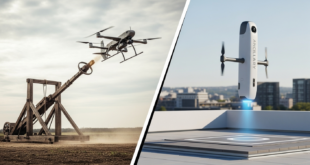Harnessing the Sun: How Solar Farms Are Accelerating the Clean Energy Transition
From agrivoltaics to AI-powered grids, solar farms are reshaping the global energy landscape—delivering clean power, healthier communities, and a brighter future.
As the planet grapples with the escalating impacts of climate change, solar energy has emerged as one of the most promising and scalable solutions. The shift from fossil fuels to clean, renewable sources of energy is no longer a distant goal—it’s a present-day necessity.
Yet, meeting terawatt-scale energy goals will require more than just adding solar panels—it demands smarter land use, optimized resource deployment, and faster installation timelines. Through innovations in technology, policy, and design, solar development is becoming more efficient, delivering clean, affordable power to communities while protecting ecosystems and boosting local economies.
Reducing Emissions, Enhancing Public Health
Solar power plays a pivotal role in reducing greenhouse gas emissions, the primary drivers of global warming. Rising global temperatures are already manifesting in the form of more frequent and intense natural disasters—wildfires, droughts, floods, and hurricanes that put millions at risk. Transitioning to solar energy can significantly mitigate these risks by cutting carbon pollution at its source.
Cleaner air means healthier lives. Communities powered by solar energy experience fewer respiratory illnesses and cardiovascular issues linked to air pollution. Thus, solar energy is not just a technological solution—it is a public health intervention, providing dual benefits for the planet and its people.
The Land Use Challenge: Doing More with Less
While the environmental benefits of solar energy are clear, scaling it up brings its own set of challenges—particularly land use. According to a report by The Guardian, the U.S. Bureau of Land Management estimates that the country will require approximately 22 million acres for solar projects in the coming decades. Such a demand for space necessitates innovative approaches to reduce the environmental footprint of solar farms.
Technologies such as vertical solar arrays, floating solar systems on reservoirs, and agrivoltaic systems that allow for simultaneous agricultural activity and solar energy production are helping to optimize land use. These solutions not only save space but also preserve valuable ecosystems and agricultural productivity, ensuring that clean energy development does not come at the cost of biodiversity or food security.
Optimizing Land Use: Efficiency Over Expansion
Bifacial panels, which absorb light on both sides, can further increase energy output by up to 30%. These innovations are shrinking the physical footprint required per megawatt, allowing solar farms to deliver more energy from less space. According to the U.S. National Renewable Energy Laboratory, powering the entire country with solar would require only about 0.6% of its land area—a fraction of what is used by fossil fuel infrastructure.
Efforts are also underway to utilize non-traditional sites for solar, including brownfields, highway rights-of-way, and degraded farmland. In Colorado, over 1,200 square kilometers of non-irrigated farmland have been identified as suitable for solar development without disrupting existing agricultural activities. These strategies ensure that clean energy growth aligns with sustainable land stewardship.
Agrivoltaics: Sharing the Land, Doubling the Benefit
Agrivoltaics—integrating solar panels with active farmland—is redefining land-use efficiency. By elevating panels above crops or grazing fields, landowners can simultaneously produce food and energy. This dual-use model not only conserves land but can also improve agricultural outcomes. Studies have shown that partial shading from panels can reduce water evaporation by up to 30%, benefiting crops in arid environments.
In Massachusetts, agrivoltaic installations have been linked to a 90% increase in lamb grazing yields. These systems offer farmers stable income through land leases, typically ranging from $300 to $800 per acre annually, while maintaining their agricultural productivity. If current trends continue, agrivoltaics could occupy 1.3 million acres in the U.S. by 2030, supplying 300 gigawatts of power without displacing food production or natural habitats.
Streamlined Deployment: From Permits to Power in Record Time
Efficient deployment of solar farms is critical to meet growing energy demands quickly and cost-effectively. By streamlining installation processes and leveraging automation, developers can reduce project timelines, lower labor costs, and accelerate access to clean, renewable power.
Traditional solar farm development has often been slowed by lengthy permitting and construction processes. Today, that is changing. Advanced digital tools now allow developers to evaluate land suitability in a matter of days, analyzing variables such as solar irradiance, proximity to transmission infrastructure, and environmental impact.
States like California and Texas have introduced streamlined permitting procedures that have reduced approval timelines by up to 40%. Meanwhile, modular construction and robotic installation techniques are enabling the build-out of 100 MW solar farms in under six months—half the time required just a decade ago. These efficiencies lower capital costs and accelerate the delivery of clean energy to the grid, creating quicker returns for investors and faster relief for the climate.
Planted Solar, a California-based startup, is redefining how solar farms are deployed by integrating robotics with advanced modeling software to rapidly build high-density solar arrays. Founded in 2020, the company has raised over $21 million—primarily from Breakthrough Energy Ventures and Khosla Ventures—to realize its mission of delivering carbon-free energy at scale. Rather than relying on flat, pristine land, Planted installs solar panels “like a blanket” on otherwise unusable terrain, such as sloped or degraded plots, significantly increasing energy output per acre while reducing environmental disruption. By leveraging robotic assembly and design automation, Planted streamlines construction, cuts project timelines, and lowers labor costs, achieving up to 50% cost savings compared to conventional solar farms.
Planted’s system is not only faster and more economical but also strategically positioned to address one of the biggest hurdles in solar expansion: land use. Traditional solar farms require about five acres per megawatt of power; Planted cuts that down to two. With the U.S. Bureau of Land Management projecting the need for 22 million acres for solar installations in the coming decades, minimizing land footprint is vital. The startup’s recent 11 MW community solar project in Chicago, developed with Cultivate Power, is an early indicator of its scalable potential. As the company continues to grow, its innovative approach—merging robotics, software, and lean design—could be a cornerstone in achieving a clean, resilient energy grid, both in the U.S. and globally.
Grid Integration and Energy Storage: Power When It’s Needed Most
The variability of solar energy output has long posed challenges to its integration into traditional power grids. However, advancements in battery storage and grid management technologies are turning this weakness into strength. Utility-scale lithium-ion batteries can now store solar energy at costs under $100 per kilowatt-hour, making it feasible to deliver consistent power even after the sun goes down.
The Sonoran Solar Energy Project in Arizona exemplifies this evolution. Pairing 900 MW of solar capacity with 600 MW of storage, it can power more than 260,000 homes well into the evening. Smart inverters and AI-based demand-response algorithms are also playing a crucial role, helping utilities dynamically balance supply and demand. On the ERCOT grid in Texas, these innovations have allowed solar to meet nearly 40% of energy demand without compromising reliability or voltage stability.
Cleaner Air, Safer Communities: The Human Impact of Solar
Beyond reducing carbon emissions, solar energy offers substantial public health and environmental benefits. The U.S. solar industry offsets over 240 million metric tons of CO₂ annually—equivalent to taking 52 million cars off the road. By replacing fossil fuel plants, solar also eliminates pollutants like sulfur dioxide and nitrogen oxides, which are responsible for asthma and heart disease. The impact on health is measurable. In 2019 alone, wind and solar energy helped prevent an estimated 400,000 asthma attacks.
Water savings are another major advantage. While fossil fuel plants consume vast amounts of water for cooling, solar installations require less than 1% of that amount—primarily for occasional panel cleaning. In drought-prone areas, this water efficiency is critical for both environmental sustainability and human wellbeing.
Conclusion: Building a Brighter, Cleaner Tomorrow
The solar energy revolution is no longer a future vision—it’s happening now. With high-efficiency technologies, dual-use farming practices, and streamlined deployment processes, the solar industry is rapidly scaling up to meet the world’s energy demands without sacrificing the environment or economic viability.
Costs have dropped by 90% since 2009, making solar the most affordable source of electricity in history. And with agrivoltaics and storage technologies expanding access and reliability, solar farms are emerging as vital engines of energy equity and environmental resilience.
As the world races to achieve net-zero emissions, solar power stands as a testament to human innovation—a solution that delivers not only energy, but hope, prosperity, and health for future generations. The sun has always powered life on Earth; now it’s powering our collective future.
For more insights, explore the Solar Energy Industries Association (SEIA)’s land use guidelines or the National Renewable Energy Laboratory’s latest research on agrivoltaics.
 International Defense Security & Technology Your trusted Source for News, Research and Analysis
International Defense Security & Technology Your trusted Source for News, Research and Analysis

